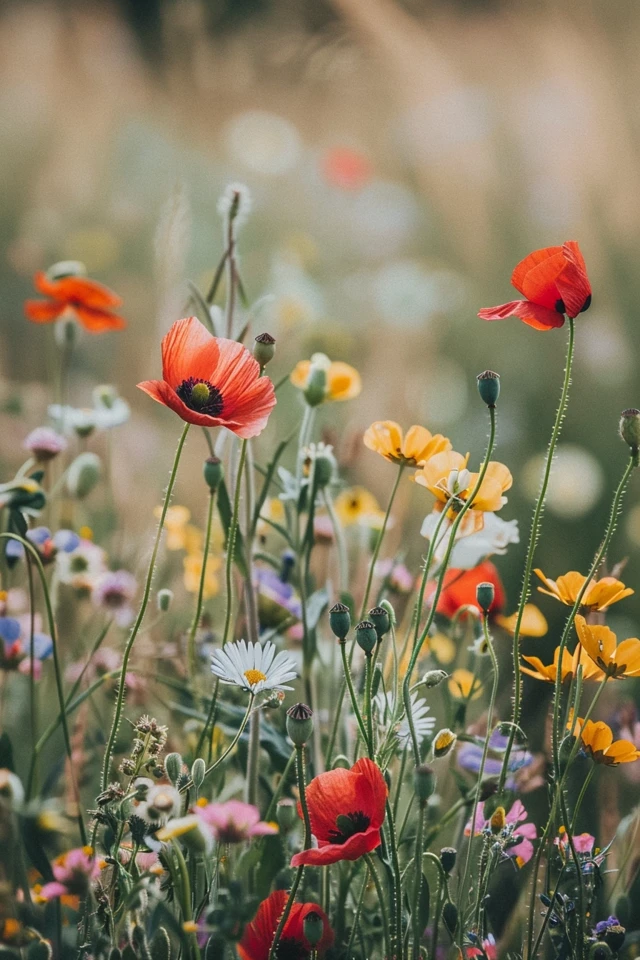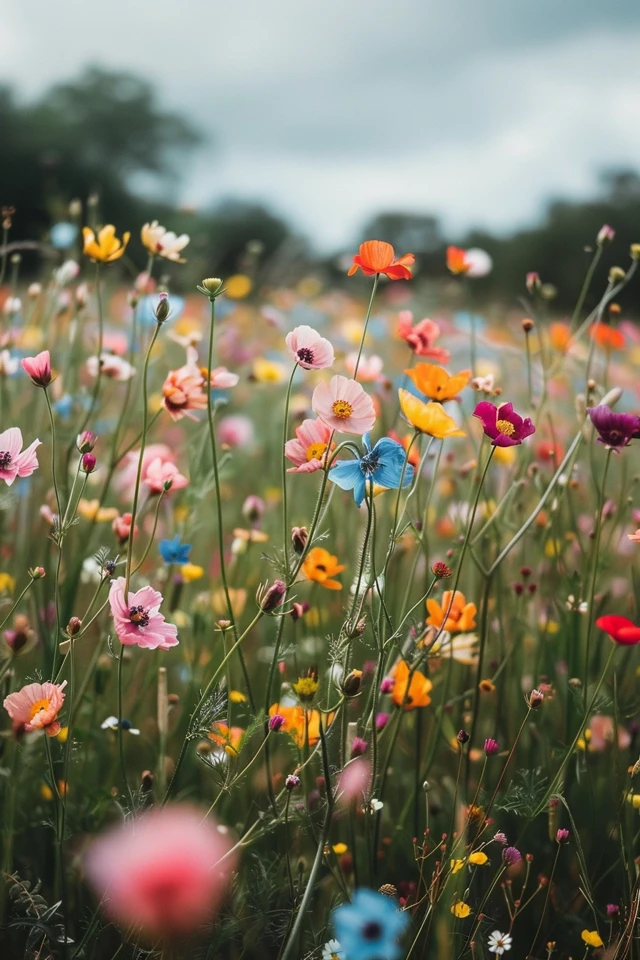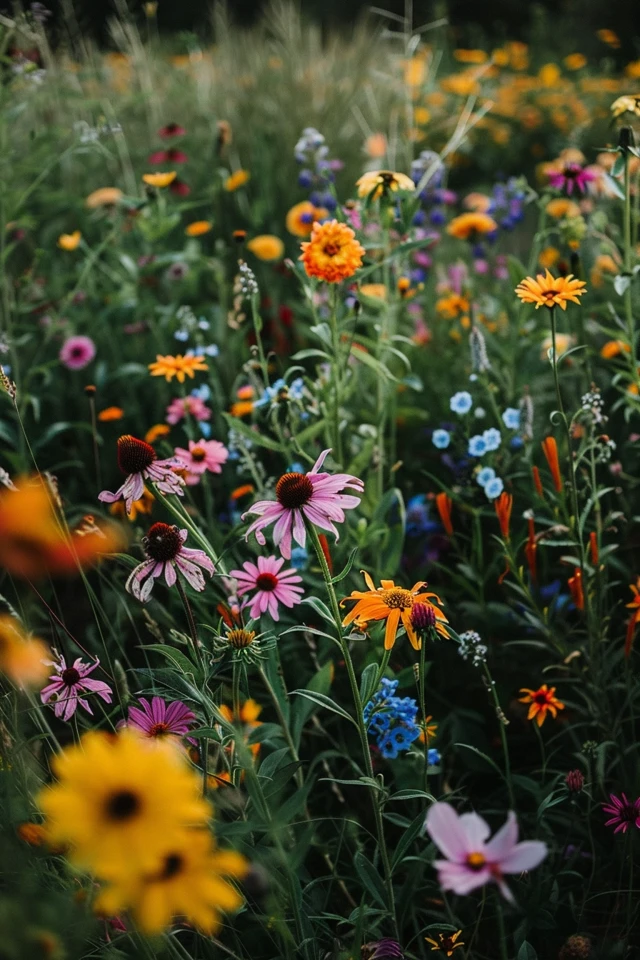Looking to add a touch of natural beauty to your backyard? Creating a wildflower garden is the perfect way to bring vibrant colors and a sense of wildness to your outdoor space. Whether you have a small planting bed or a spacious yard, native wildflowers can transform any area into a blooming oasis.
When starting a wildflower garden, it’s important to consider the native wildflowers that thrive in your region. Selecting plants that are adapted to your local climate and soil conditions will ensure their success and minimize maintenance. Additionally, take note of the existing vegetation in your area, as certain plants may complement or compete with your wildflowers.
To create a well-rounded wildflower garden, it’s best to include a mix of plants that reseed themselves, as well as perennials and flowering bulbs. This combination will provide continuous blooms throughout the season and establish a self-sustaining ecosystem in your garden. By choosing a variety of flowers, you can attract pollinators like bees and butterflies, further enhancing the natural beauty of your space.
When it comes to maintenance, wildflower gardens are relatively low-maintenance compared to traditional flower beds. By limiting the use of pesticides and allowing some plants to go to seed, you can encourage natural pest control and the return of beneficial insects to your garden. Additionally, consider the bloom times of your chosen wildflowers to ensure a continuous display of color in your garden.
Remember, wildflowers are a vital habitat for many species, so delaying your fall cleanup can help provide shelter for overwintering insects and maintain a healthy garden ecosystem. Embrace the wildness of nature and watch your garden bloom with style!

Key Takeaways:
- Choose native wildflowers that are suited to your region’s climate and soil conditions.
- Include a mix of plants that reseed themselves, perennials, and flowering bulbs for continuous blooms.
- Limit pesticide use and allow some plants to go to seed for natural pest control.
- Consider the bloom times of your wildflowers for a continuous display of color.
- Delay fall cleanup to provide habitat for overwintering insects and maintain a healthy garden ecosystem.
Tips for Choosing Wildflowers for Your Garden
When it comes to creating a beautiful and vibrant wildflower garden, careful planning and thoughtful selection of plants are key. In this section, I will share some valuable tips to help you choose the perfect wildflowers for your garden, ensuring a stunning display of color and attracting a variety of wildlife.
Consider the Overall Design
Before diving into the world of wildflowers, it’s essential to consider the overall design of your garden. Wildflower meadows can be achieved by selecting a mix of plants that provide visual interest, wildlife habitat, and year-round appeal. To enhance the wild and natural feel of your garden, incorporate woven willow fencing to define and contain the area. Creating paths within the garden and adding anchor points like topiary or trees can also add structure and visual appeal.
Transform Your Lawn into a Wildflower Meadow
If you have a lawn area that requires frequent mowing and maintenance, why not transform it into a breathtaking wildflower meadow? By replacing sections of your lawn with wildflowers, you not only reduce the amount of time spent on maintenance but also create a haven for wildlife. Imagine the vibrant colors and dancing butterflies that will grace your garden once the wildflowers are in full bloom.

Combine Wildflowers with Native Grasses
For those who prefer container gardening or have limited space, combining wildflowers with native grasses can create a stunning and low-maintenance display. The graceful movements of the grasses complement the vibrant colors of the wildflowers, adding depth and texture to your garden. Consider planting wild roses among the mix to add a touch of romance and elegance to your outdoor space.
Create Immersive Features
To truly enhance the beauty of your wildflower garden, consider creating immersive features such as serpentine paths or poolside plantings. These features not only add visual interest but also create a sense of exploration and tranquility. Wander along the meandering path, surrounded by a blanket of colorful wildflowers, and discover hidden corners of natural beauty in your own backyard.
“A garden should make you feel you’ve entered privileged space – a place not just set apart but reverberant – and it seems to me that, to achieve this, the gardener must put some kind of twist on the existing landscape, turn its prose into something nearer poetry.” – Michael Pollan
By following these tips and letting your creativity flourish, you can create a wildflower garden that is not only visually stunning but also a haven for wildlife. Embrace the wildness of nature and enjoy the colorful display that unfolds before your eyes. Your garden will not only provide beauty and enjoyment but also contribute positively to the environment.
Easy-to-Grow Wildflowers for Your Garden
Wildflowers are a fantastic choice for creating a vibrant and low-maintenance garden. Not only are they hardy and self-reproducing, but they also offer a range of benefits for your garden ecosystem. By attracting butterflies, hummingbirds, and beneficial insects, these flowers contribute to the overall health and diversity of your backyard. Here are some easy-to-grow wildflowers that will thrive in your garden:
- Black-eyed Susan: These bright yellow flowers with dark centers are not only beautiful but also attract bees and butterflies.
- Yarrow: With its feathery foliage and clusters of tiny flowers, yarrow adds a touch of elegance to any garden. It’s also a favorite of pollinators.
- Zinnia: Zinnias come in a variety of colors and sizes, making them a versatile choice for any garden. They are known for attracting bees and butterflies.
- Golden Alexander: This native wildflower produces clusters of small yellow flowers that are irresistible to bees and butterflies.
- Cleome: Also known as spider flower, cleome offers unique, delicate blooms that attract hummingbirds and bees.

The Benefits of Wildflowers
Creating a wildflower meadow or incorporating wildflowers into your garden can have numerous benefits. Apart from their aesthetic appeal, wildflowers play an essential role in supporting pollinators and other beneficial insects. By providing nectar and pollen, they contribute to the overall health of your garden ecosystem. Additionally, wildflowers are resilient and require minimal care once established. They can thrive in full sun or partial shade, making them adaptable to a range of environments.
Tips for Successful Planting
To start your wildflower garden, choose a location that receives the appropriate amount of sunlight. Full sun is ideal, but some wildflowers can tolerate partial shade. Prepare the soil by removing existing vegetation, tilling, and leveling it. This helps create an optimal environment for the seeds to germinate. Sow the seeds evenly and water them gently. Applying a light layer of mulch will help retain moisture and protect the seeds. Over time, occasional overseeding will help maintain the wildflower meadow.
With a little care and attention, your wildflower garden will provide you with years of beauty and enjoyment while supporting the local ecosystem. So, roll up your sleeves and create your own colorful and eco-friendly oasis!
Conclusion
Wildflower gardens offer a charming and eco-friendly way to embrace nature in your backyard. By following these tips and incorporating wildflowers into your landscape, you can create a vibrant and low-maintenance oasis that is teeming with life. Not only do wildflowers provide beauty and visual interest, but they also attract butterflies, bees, and other beneficial insects, making your garden a haven for wildlife.
Whether you choose to create a wildflower meadow, transform your lawn, or incorporate wildflowers into existing planting beds or containers, your backyard can become a thriving ecosystem and a source of enjoyment for years to come.
So, why wait? Let the beauty of wildflowers bloom with style in your own backyard, and create a vibrant and eco-friendly oasis to relax and appreciate the wonders of nature.

